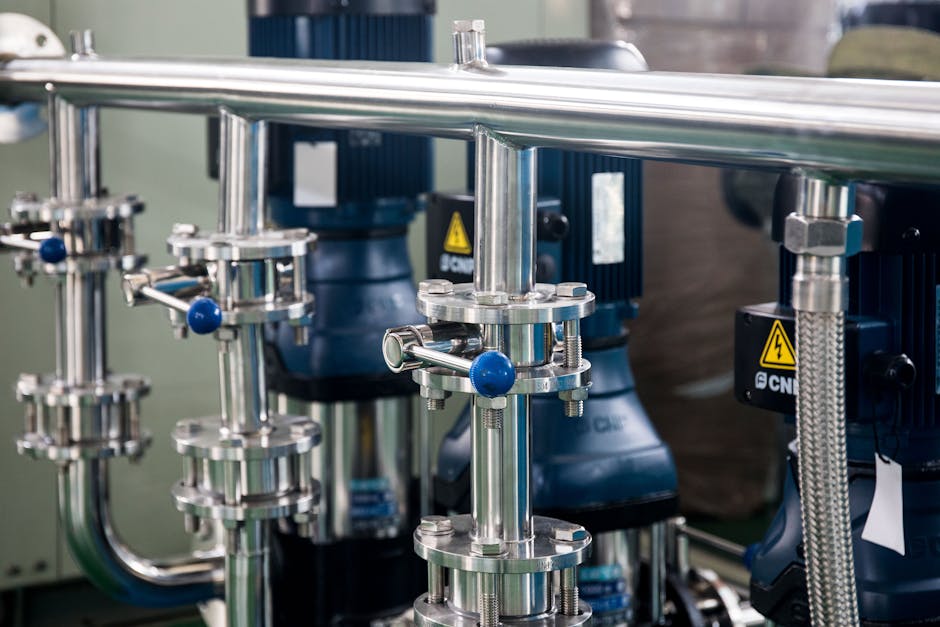Quality Management Systems in Precision Engineering: ISO Standards and Best Practises
You’re looking to implement a quality management system (QMS) in precision engineering to achieve consistent excellence, enhance customer satisfaction, and drive business growth. By adopting ISO 9001 standards, you’ll gain industry recognition, boost market credibility, and differentiate yourself from competitors. A QMS will help you identify and address process inefficiencies, establish clear policies and objectives, and drive continuous improvement. To get started, you’ll need to define key performance indicators, identify and mitigate risks, and establish corrective action procedures. Now that you’ve taken the first step, discover how to fine-tune your QMS for exceptional results.
Key Takeaways
• Implementing an ISO 9001-certified quality management system boosts credibility and differentiates precision engineering companies from competitors.• Establishing clear policies, procedures, and work instructions ensures a structured approach to quality management.• Effective key performance indicators (KPIs) drive continuous improvement by providing actionable insights into quality management system performance.• Identifying and mitigating risks in precision engineering processes reduces the likelihood of defects, delays, and other undesirable outcomes.• Conducting regular audits and documentation reviews ensures compliance with ISO standards and identifies areas for improvement in the quality management system.
Benefits of ISO 9001 Certification

By obtaining ISO 9001 certification, organisations can reap numerous benefits that enhance their overall performance and competitiveness in the market.
You’ll gain industry recognition, as ISO 9001 is a globally recognised standard that demonstrates your commitment to quality. This, in turn, boosts your market credibility, making it easier to attract new customers and retain existing ones.
With ISO 9001 certification, you can differentiate yourself from competitors and increase your market share.
Moreover, ISO 9001 certification helps you improve your internal processes, reducing errors and increasing efficiency.
You’ll be able to identify and mitigate risks, reducing the likelihood of costly mistakes and downtime. This leads to cost savings, improved productivity, and enhanced customer satisfaction.
In addition, ISO 9001 certification demonstrates your organisation’s ability to consistently provide products and services that meet customer and regulatory requirements.
This builds trust with your customers, leading to increased loyalty and repeat business.
Implementing a Quality Management System

To design and implement a quality management system that meets the ISO 9001 standard and drives continuous improvement in your organisation, you’ll need to adopt a structured approach that considers your organisation’s specific needs and goals.
Identify the processes that make up your quality management system, including those related to design, production, and delivery.
Establish clear policies and objectives that aline with the ISO 9001 standard, and communicate these to all stakeholders.
Develop procedures and work instructions that outline the steps needed to achieve your quality objectives, including those related to Change Management and System Integration.
When implementing your quality management system, it’s essential to consider the needs of all stakeholders, including customers, employees, and suppliers.
This includes providing training and resources to ensure that everyone understands their roles and responsibilities in maintaining and improving the system.
Key Performance Indicators for Quality

You need to establish Key Performance Indicators (KPIs) for quality that provide measurable targets to evaluate your quality management system’s effectiveness and drive continuous improvement. These KPIs will help you quantify and analyse your quality metrics, enabling data-driven decisions to optimise your processes.
To create effective KPIs, you should focus on metrics that are relevant, measurable, achievable, relevant, and time-bound (SMART). This will guaranty that your quality metrics are alined with your organisation’s objectives and provide actionable insights.
| Quality Metric | Target || First-pass yield | ≥ 95% || Customer satisfaction | ≥ 90% || Defect density | ≤ 0.5% || On-time delivery | ≥ 98% |
Risk Management in Precision Engineering

Identify and assess potential risks in your precision engineering processes to mitigate the likelihood of defects, delays, and other undesirable outcomes. Risk management is a critical component of a quality management system, as it enables you to proactively address potential issues before they occur.
By identifying and mitigating risks, you can reduce the likelihood of defects, delays, and other undesirable outcomes that can impact your business.
To effectively manage risk, you should:
- Conduct a thorough risk assessment to identify potential failure modes and their impact on your processes
- Evaluate the likelihood and severity of each identified risk
- Implement controls and mitigation strategies to reduce the likelihood or impact of each risk
By following these steps, you can develop a thorough risk management plan that helps you stay ahead of potential issues and confirm the quality of your precision engineering processes.
Some common risk management techniques used in precision engineering include:
- Failure Mode and Effects Analysis (FMEA)
- Hazard and Operability Studies (HAZOP)
- Root Cause Analysis (RCA)
These techniques can help you identify and mitigate risks, guaranteeing that your precision engineering processes are reliable, efficient, and produce high-quality products.
Continuous Improvement Strategies

As you implement continuous improvement strategies, you’ll need to identify areas for improvement, set realistic targets, and monitor progress closely.
By doing so, you’ll be able to pinpoint inefficiencies and opportunities for growth, and create a roadmap for achieving your goals.
Identify Areas for Improvement
Implementing a quality management system necessitates ongoing scrutiny of processes to pinpoint areas ripe for refinement, thereby fostering a culture of continuous improvement.
As you aim to enhance your precision engineering operations, you must identify areas that require improvement. This involves a systematic approach to uncover inefficiencies, waste, and opportunities for growth.
To achieve this, you can employ various tools and techniques.
- Root cause analysis: to identify the underlying reasons behind defects, errors, or other issues
- Process mapping: to visualise and analyse workflows, highlighting bottlenecks and areas for optimisation
- Staff feedback and suggestions: to tap into the collective knowledge and experience of your team members
Set Realistic Targets
By establishing specific, measurable, achievable, relevant, and time-bound (SMART) targets, you can create a roadmap for continuous improvement, facilitating that your quality management system remains focussed and effective.
This goal-setting approach enables you to prioritise efforts, allocate resources, and aline team efforts towards achieving meaningful objectives.
To set realistic targets, consider the current performance gaps and opportunities for improvement identified in your quality management system.
Aline these targets with your organisation’s overall goals and objectives, guaranteeing that everyone is working towards the same outcomes.
This target alinement is critical to confirm that all efforts are concerted and effective.
When setting targets, prioritise the most critical areas for improvement and allocate resources accordingly.
This will facilitate you to make measurable progress towards your goals and maintain a culture of continuous improvement.
Monitor Progress Closely
You must regularly review and analyse performance metrics to guaranty your quality management system is on track to meet its targets, identifying areas that require adjustment or additional resources. This continuous monitoring enables you to make data-driven decisions, maintaining your system’s effectiveness and efficiency.
To monitor progress closely, consider the following strategies:
-
Track project milestones: Regularly review project timelines and milestones to confirm they aline with your quality management system’s objectives. This helps identify potential roadblocks and opportunities for improvement.
-
Analyse team velocity: Measure your team’s productivity and velocity to identify areas where processes can be optimised, guaranteeing resources are allocated efficiently.
-
Conduct regular retrospectives: Hold regular meetings to discuss what’s working and what’s not, allowing your team to reflect on their experiences and implement changes for continuous improvement.
Auditing and Corrective Actions

As you implement a quality management system, you’ll need to conduct audits to verify compliance and identify areas for improvement.
To get the most out of these audits, you should prepare thoroughly by identifying key processes, gathering necessary documents, and assigning responsibilities.
Audit Preparation Essentials
To guaranty a successful audit, it’s vital to prepare thoroughly by gathering and reviewing relevant documentation, identifying potential nonconformities, and addressing them proactively.
As you prepare for the audit, focus on confirming that your quality management system (QMS) is in compliance with ISO standards. This will help you identify areas that require improvement and take corrective action before the audit.
When preparing for the audit, make sure to:
- Develop an audit checklist to confirm that all necessary documentation is in order
- Conduct a thorough documentation review to identify any gaps or inconsistencies
- Verify that all processes and procedures are up-to-date and alined with ISO standards
Corrective Action Procedures
Implementing effective corrective action procedures is vital in guaranteeing that audit findings are addressed promptly and efficiently, thereby preventing recurrence of nonconformities.
You must develop a systematic approach to identify, document, and correct nonconformities. This involves conducting a thorough root cause analysis to identify the underlying causes of the nonconformity.
By analysing failure modes, you can pinpoint the specific process or system that failed, and take corrective action to prevent its recurrence.
When developing corrective actions, you should consider the severity of the nonconformity, the likelihood of recurrence, and the potential impact on your quality management system.
You should also establish a clear timeline for implementation and verification of corrective actions, certifying that they’re completed promptly and effectively.
In addition, you should maintain records of corrective actions, including the root cause analysis, corrective action taken, and verification of effectiveness.
Conclusion
As you reflect on the journey to excellence in precision engineering, remember that a quality management system isn’t a destination, but a continuous pursuit of perfection.
On one hand, the precision and complexity of your products demand flawless execution; on the other hand, the ISO 9001 certification provides a framework for achieving just that.
By embracing this standard, you’ll not only mitigate risks but also tap the full potential of your organisation, propelling it toward unparallelled success.
Contact us to discuss our services now!
